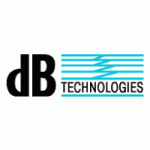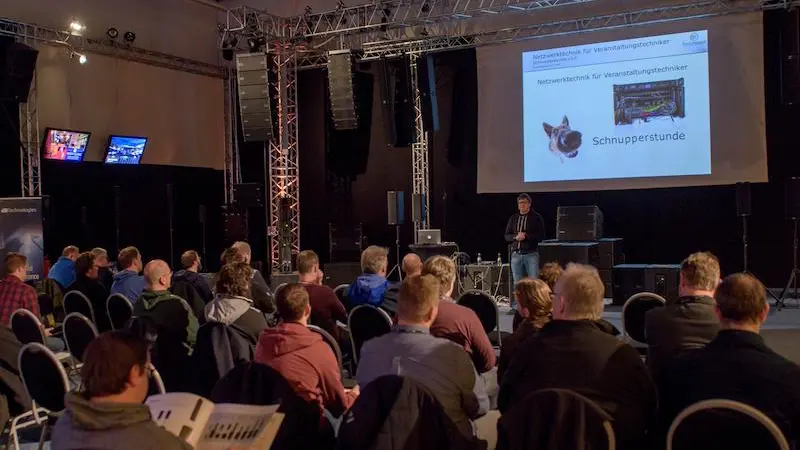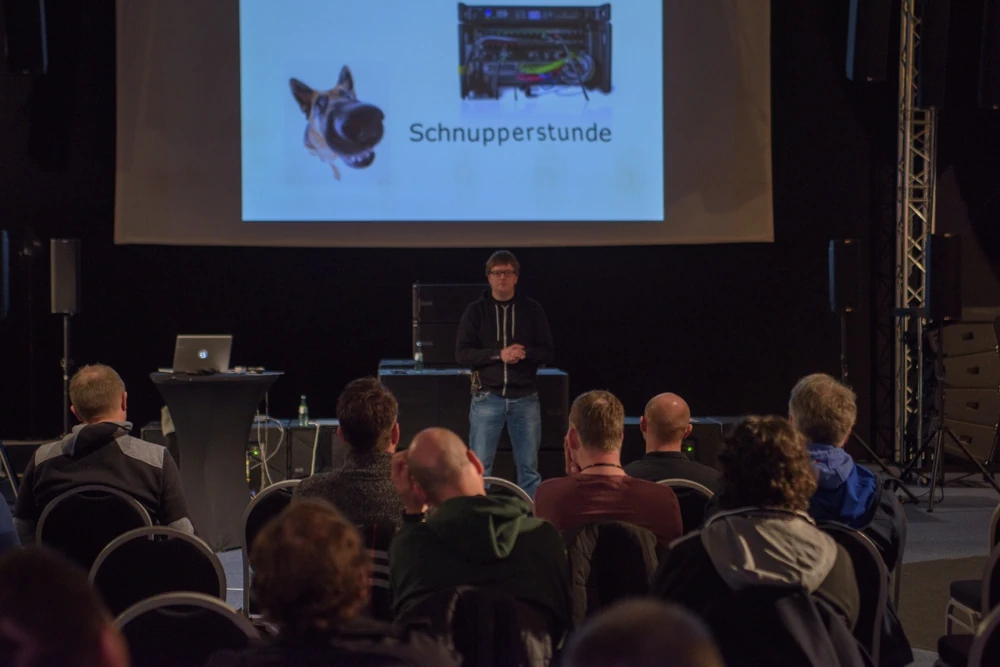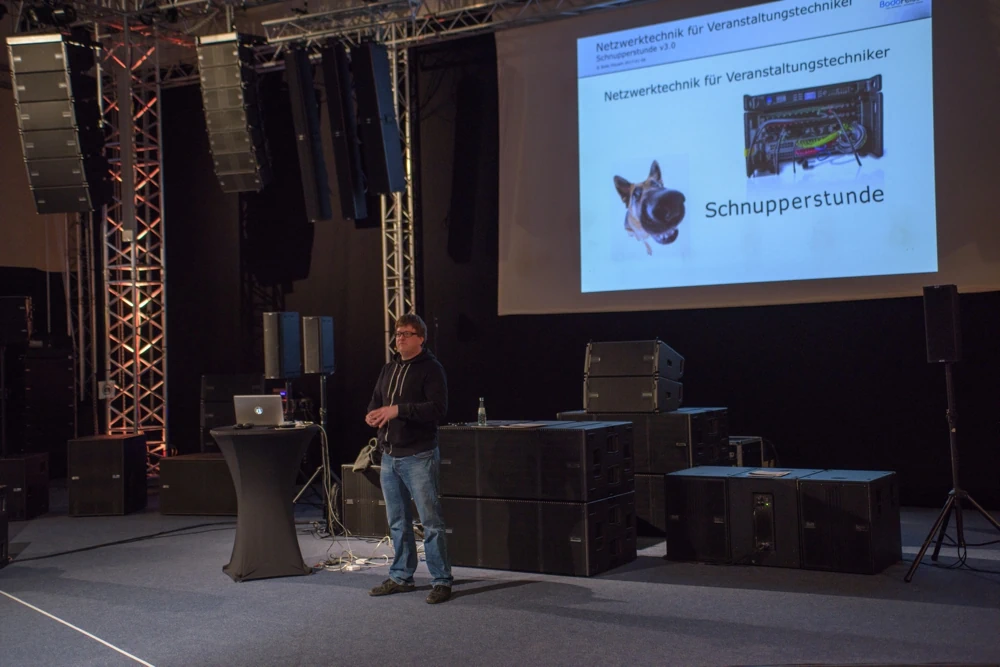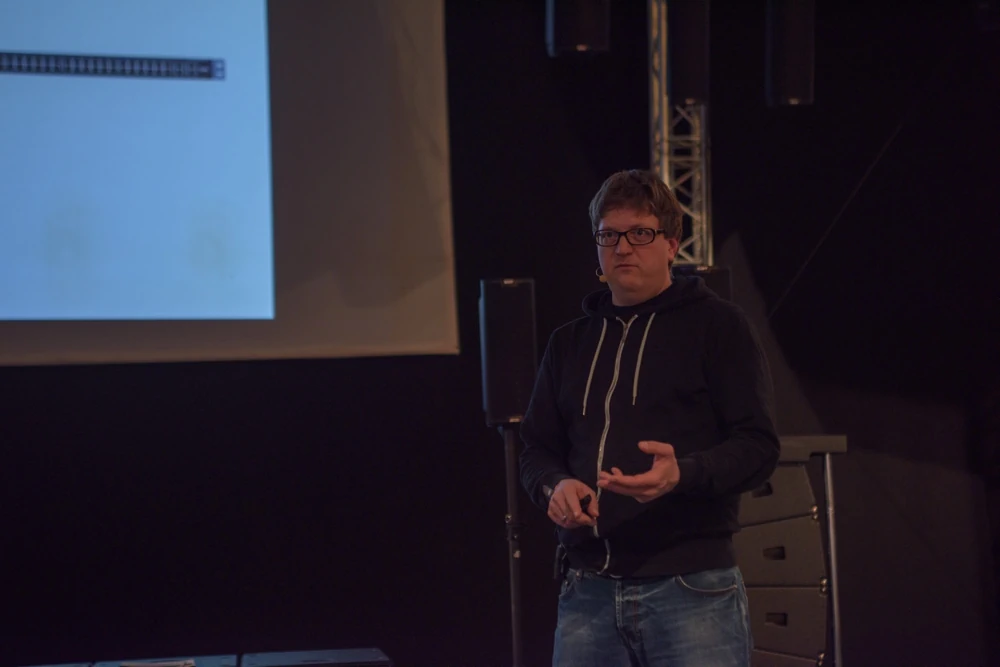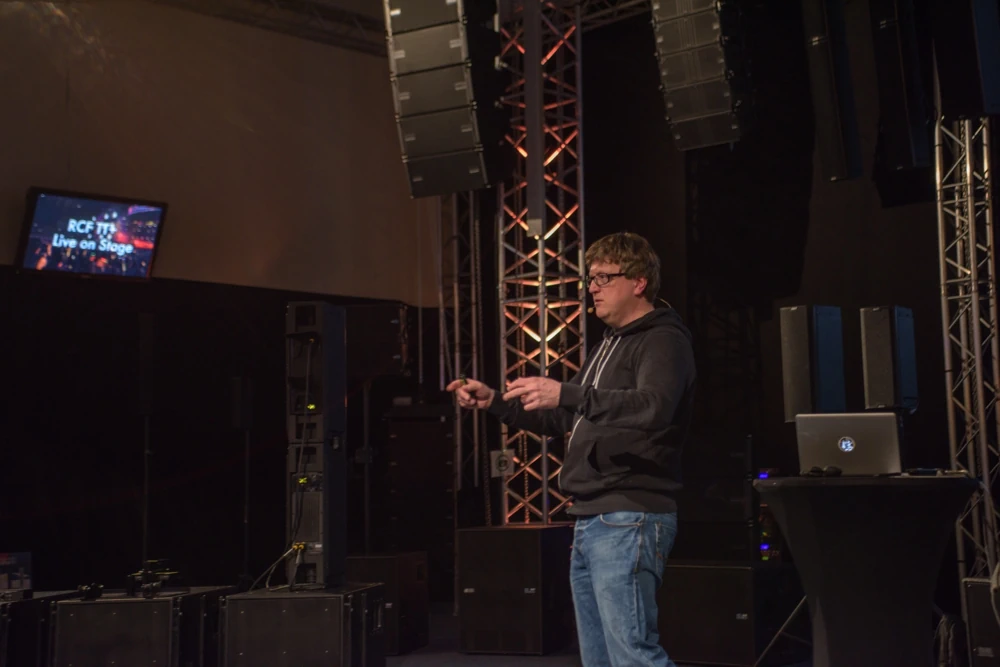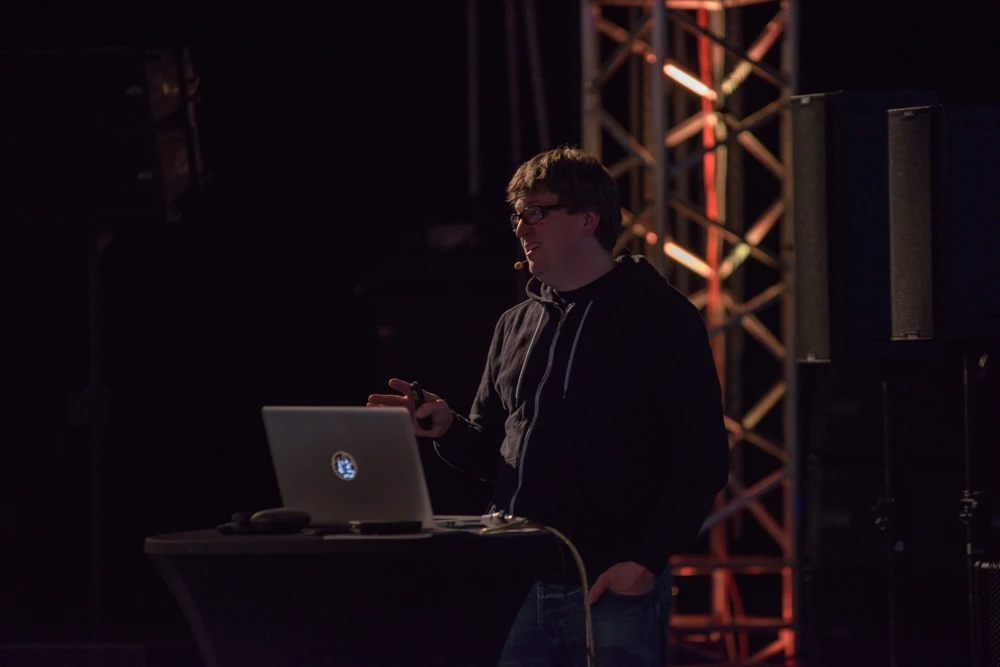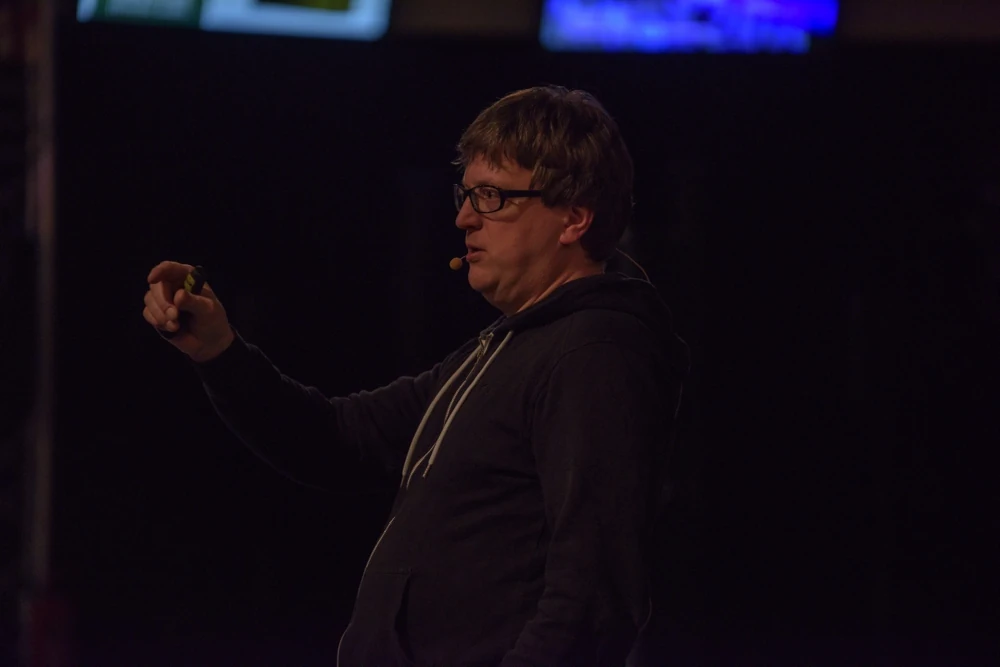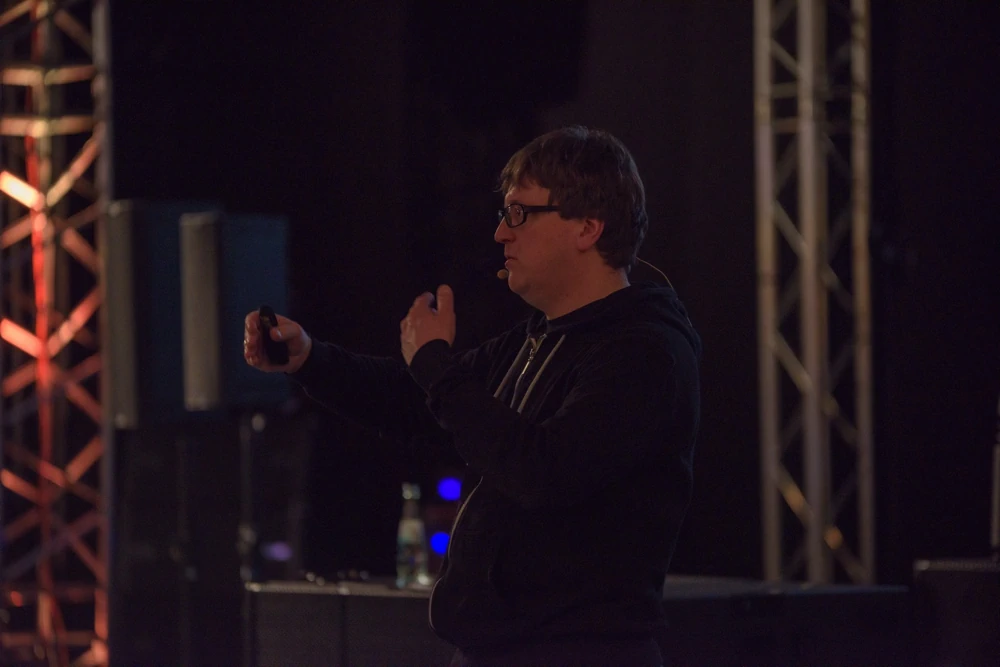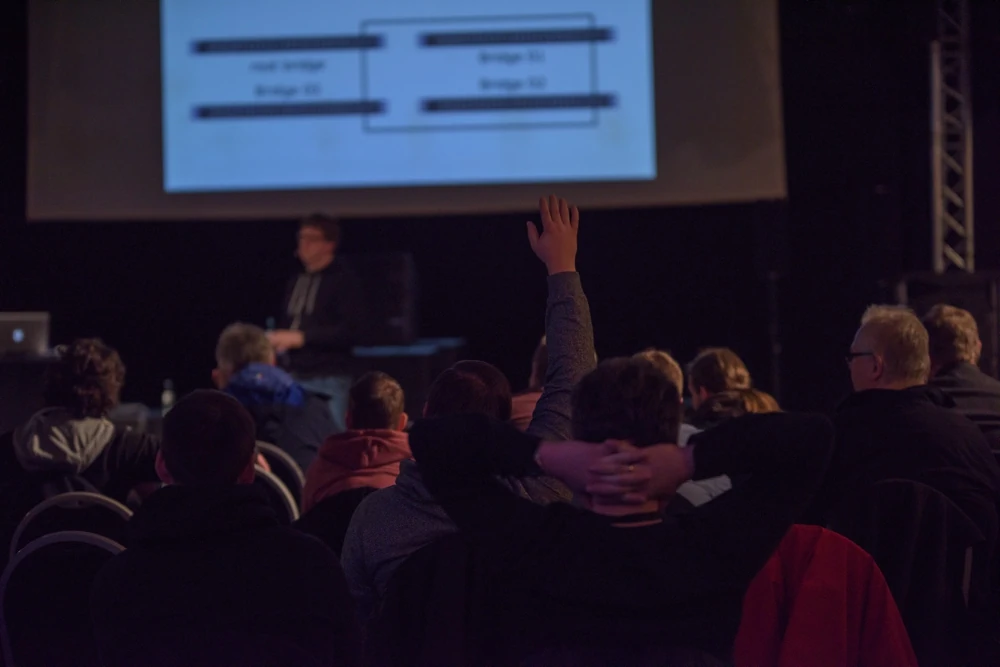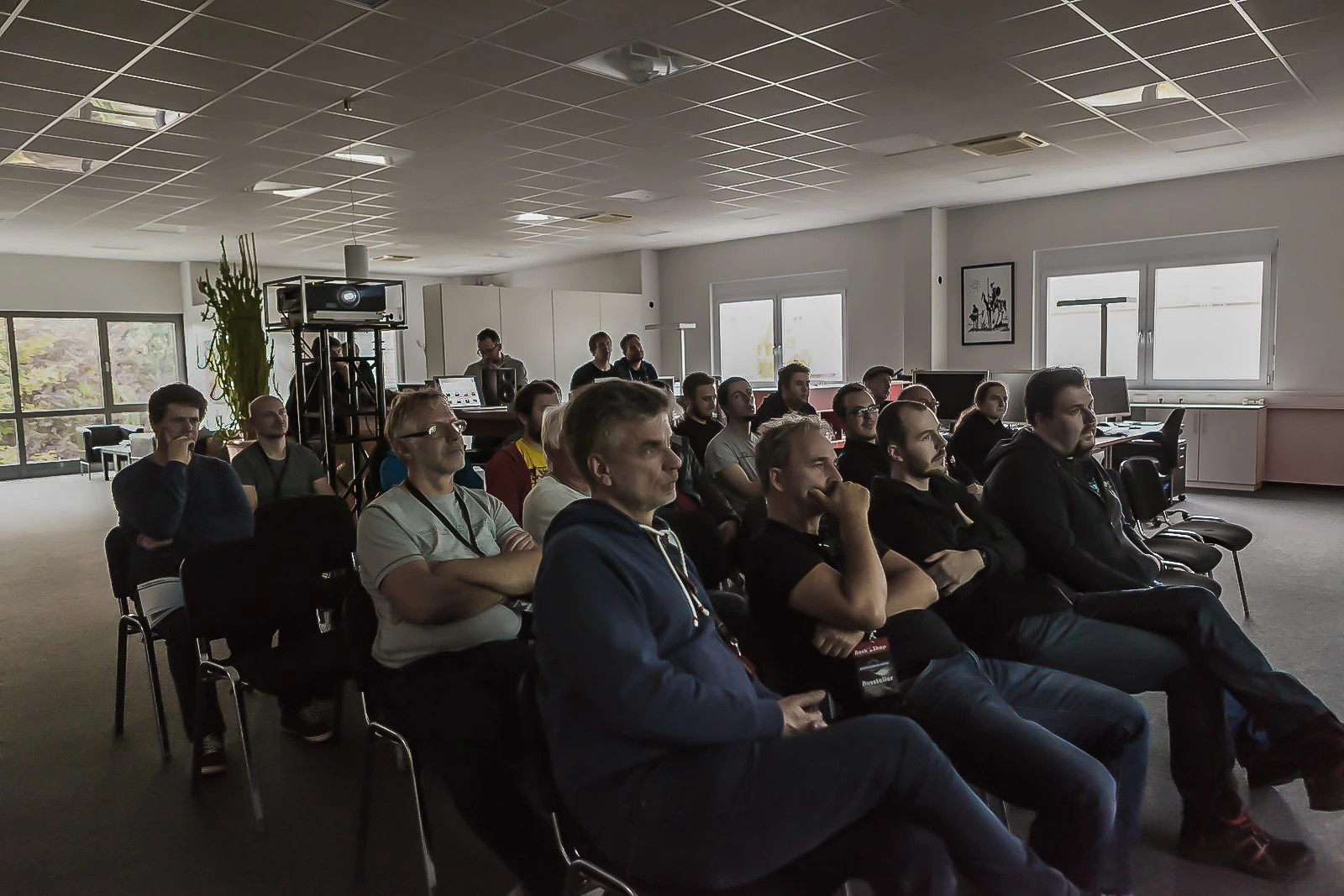Don't panic... it's just a network
The lecture on the topic of networks in event technology can be presented in a one- or two-hour time slot. The aim is to provide a comprehensive overview of the possibilities of transporting signals in event environments using IT technology. The focus is on ‘what is possible’, while the three-day seminars shed light on ‘how to do it’.
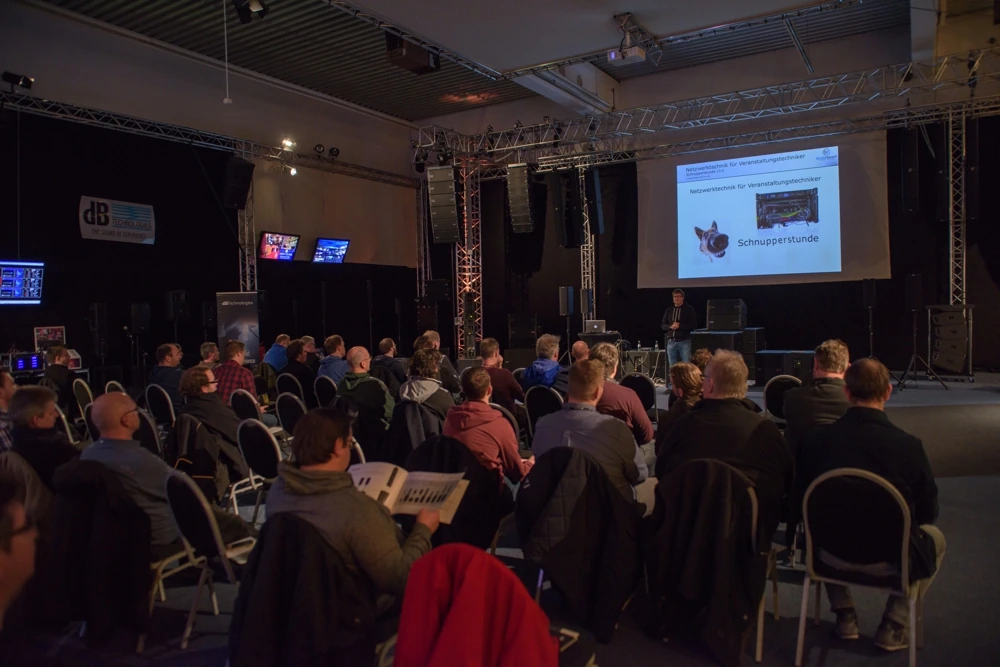
No previous knowledge required
Scope: One hour or two hours
For in-house trade fairs, customer seminars, open days and the like
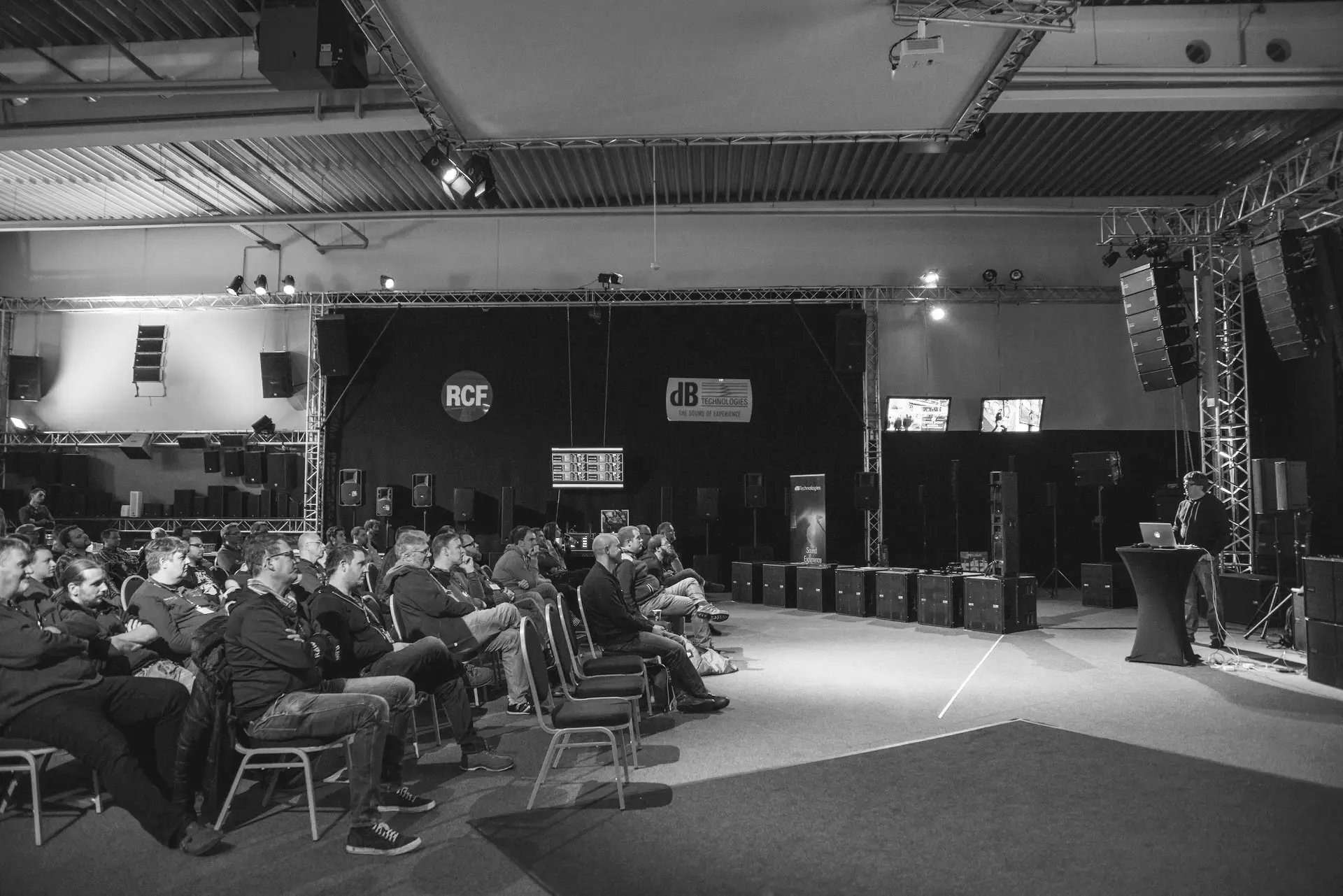
INHALT
IT components in the signal chain are not a trend that disappears again.
The advantages over antiquated analog or digital 1:1 direct connections are one reason for this. For example, the physical connection is no longer the same as the logical connection, once set up, the connection location of devices no longer plays a role. Redundancies can be realized cost-effectively and required bandwidths for the mixed operation of different trades are scalable. Ethernet networks are subject to rapid technological progress, are highly available and planning skills are a matter of course internationally.
As a media-creating user, you have to master the basic features of the technology to ensure safe commissioning and troubleshooting. The openness and compatibility of IEEE Ethernet is often promoted, but in practice this healthy world of compatibility is quickly reaching its limits. Boundaries that the participant of the lecture will get to know as well as working solutions for mixed production networks.
Various trades are to be separated via VLANs and transported via common backbone lines. To increase the bandwidth between the different network positions, link aggregation groups are set up and data of varying importance is prioritized using Quality of Service. Typical bandwidths of audio, light and video signals are discussed in an IP world as well as an outlook on the changing requirements with SDVoE (Software Defined Video over IP).
The presentation will focus on best practice examples of cross-trade signal distribution using Ethernet networks in the mobile event sector.
The questions of what to do with Ethernet and what not to do better are answered with illustrative examples from the practical experience of the speaker.
Learning objectives (1-hour variant):
- What is Analog vs.
- Evolution of signal distribution
- Compatibility and its Boundaries
- Switch Configuration & Documentation
- Mixed production networks
- Link Aggregation Groups
- Typical bandwidths of audio, light and video networks
- Headroom recommendations
- Requirements for SDVoE Video over IP Networks
- Prioritization with Quality of Service
- TCP vs. UDP
- Practice Example Mixed operation with and without QoS
- Practice Example Error source defective cable
- What is a VLAN?
- Practical tips for EtherCon cabling
- Rules for a stress-free life with network technology
Learning objectives (2-hour variant):
- What is Ethernet
- Open IEEE vs. propreritious protocols
- OSI Model & Media Networks
- Analog vs. IT
- Trades Mixed operation ...’over IP’
- Trunk Ports ⁇ Link Aggregation
- Typical bandwidths & Headroom recommendations
- Quality Of Service (QoS), Opportunities & Limits of Prioritization
- Tips & Tricks
- P2P
- line
- ring
- star
- tree
- mesh
- RSTP Rapid Spanning Tree Function
- Possibilities for redundancy
- VLANs for logical separation in mixed operation of several trades
- Requirements for switches
- Recommendation for selecting switches
- Rules for a stress-free life with network technology
Only bookable as an in-house event
Seminar in your premises
Ideal for employee training
Target-oriented, simple, uncomplicated
trainers
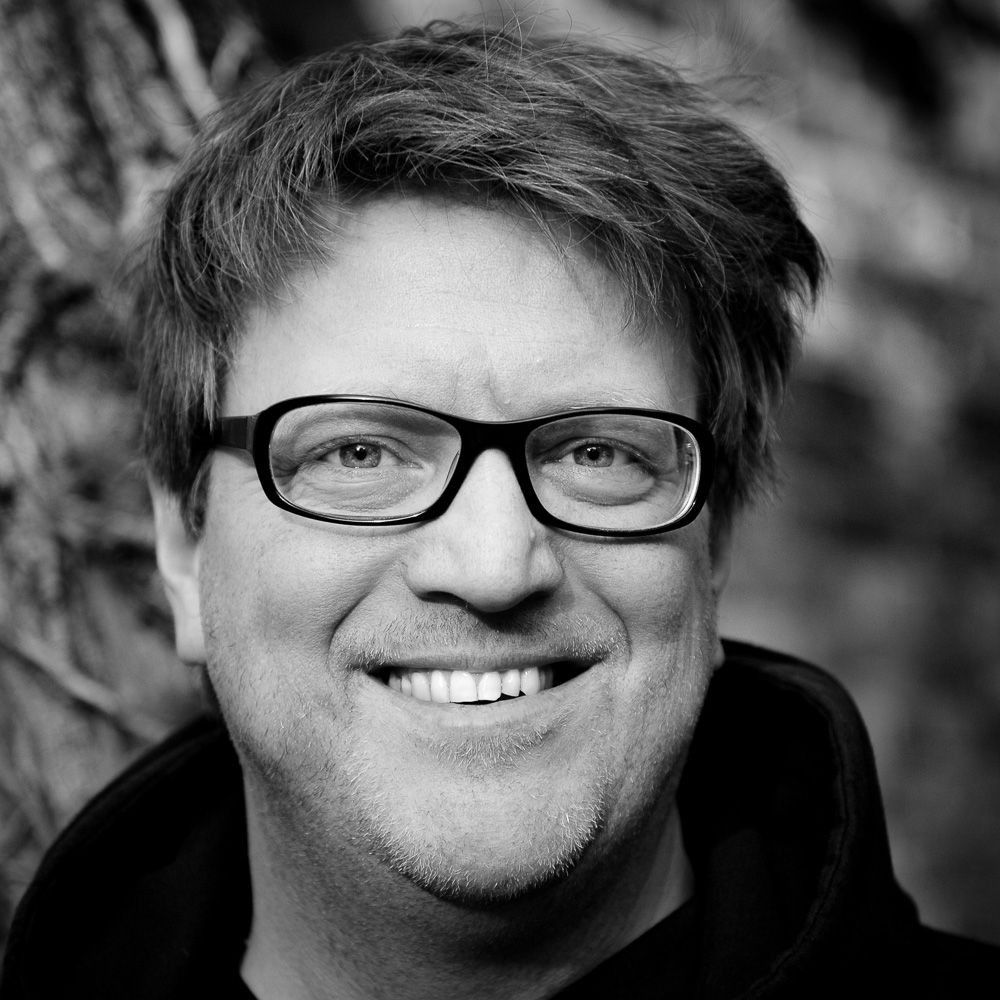
Bodo Felusch
Sound technician, Audio over IP specialist and initiator of the “Lake Training” seminars since 2008 and “Network Technology for Event Technicians” since 2013.
Motto: "Don't panic, it's just a network"
25+ years in the professional audio business
300+ seminar days
3000+ participants trained with IT For AVs


